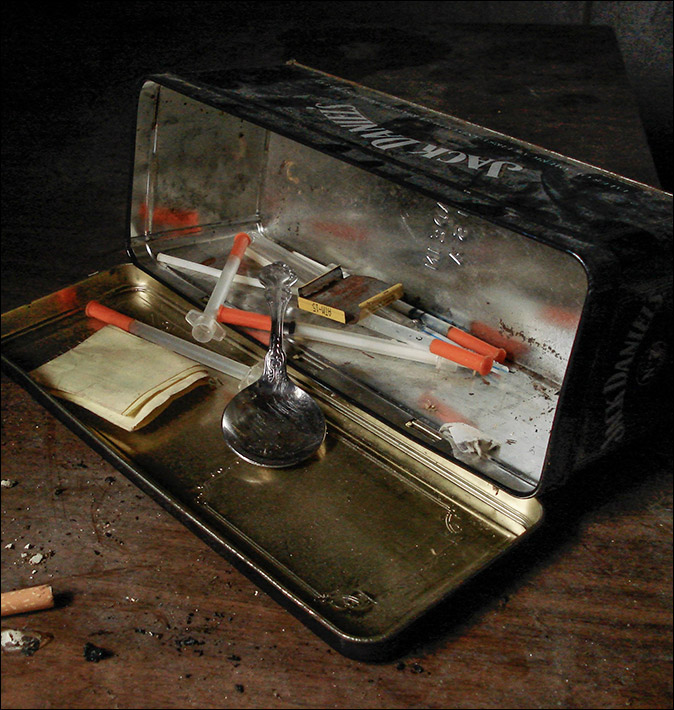
While it might not be in the news as much these days, it’s important to understand meth withdrawal symptoms, detox, and treatment because methamphetamine abuse and addiction is still a very real problem in many parts of the United States.
Between 2015 to 1018, the Centers for Disease Control and Prevention (CDC) reports that an estimated 1.6 million Americans, ages 12 and older, admitted to using meth in the past year. Unfortunately, only a small portion of those people ever received treatment.
The problem is compounded because cheap meth is being produced in Mexico in large quantities. Even more troubling is that methamphetamine is being mixed with fentanyl to provide a more potent drug.
On the street, methamphetamine is sold under different names, like ice, crystal meth, glass, shards, and speed among others.
For users that develop a physical dependence to the drug, quitting can be especially difficult because meth withdrawal symptoms can place the body in extreme physical and psychological pain and stress.

What is Meth (Methamphetamine, Crystal Meth)?
Methamphetamine often looks like small bluish or white crystal-like powder and is considered a psycho-stimulant and a synthetic drug that affects the central nervous system. When meth is smoked, snorted, or injected, the brain releases a surge of the neurotransmitters dopamine and serotonin.
The flood of dopamine and serotonin in the brain increases alertness, energy, and sociability. The “meth high” offers the user a powerful sense of euphoria, which is one of the reasons it is highly addictive.
Aside from the generally cheaper price of meth when compared to other drugs like cocaine or prescription painkillers, it is readily available on the street and it gained popularity because a meth high can last up to eight hours long.
The Meth Comedown and Tolerance
The meth comedown is different from meth withdrawal because of chemical changes in the brain, the body’s exhaustion from processing the substance, and the energy expended during the high.
The unpleasant effects of anxiety, fatigue, muscle pain, and jaw clenching from the drug’s comedown can drive many people to continue using meth.
With continued use of the drug, a typical user will quickly develop a tolerance to meth and they need more of the drug to get high and avoid the unpleasant symptoms and side effects.
Even after using meth for a fairly short time, many people find they have developed a tolerance and become physically dependent on the drug.
How Long Does Meth Stay in Your System?
Most users are curious about how long meth stays in the system for a variety of reasons.
When used by itself and either smoked or snorted, methamphetamine has a half-life of around 10 hours. This means the body has processed half of the substance during this time, with the remaining amount taking up to several days to metabolize.
That is only a rough guide however, because if meth is injected, it can remain in the body much longer.

In addition, if meth is used with other drugs, like alcohol, opioids, or if it’s cut with other substances, it can stay in the system even longer.
When a person has stopped using the drug long enough for the body to metabolize all traces of it, meth withdrawal usually kicks in.
The combination of both the meth comedown and meth withdrawal can be difficult and creates extremely uncomfortable physical and mental symptoms.
Related: How Long Does Alcohol Withdrawal Last?
What are the Symptoms of Meth Withdrawal?
As the symptoms of meth withdrawal begin, the first phase is often referred to as a “meth crash.”
In this stage, depression and fatigue can be overwhelming, causing some people to sleep for excessive periods. In between sleeping, they may find they have a voracious appetite.
These symptoms are expected since meth abuse makes both sleeping and eating difficult.
Around day three, most people in meth detox are at their most vulnerable to relapse because intense cravings take over. It’s common for a person in this stage to have extreme anxiety and feel as if they can’t live without the drug.
Overcoming these two stages of withdrawal will take support and compassion for someone recovering from meth addiction and there is still difficult work ahead.
Beyond the first two stages of meth withdrawal, post-acute withdrawal symptoms (PAWS) are likely to start.
These PAWS symptoms can range from cravings, depression, and anxiety, to irritability, mood swings, and difficulty concentrating.
For people with a long-term meth addiction, this stage can last from six months to a year.

During the initial stages of meth withdrawal, physical and psychological symptoms can vary depending on the person and length of time they have been addicted to the drug.
Common Meth Withdrawal Symptoms include:
- Extreme fatigue
- Increased appetite
- Severe stomach cramps
- Insomnia
- Intense irritability
- Mood swings
- Itchy eyes
- Muscle and body aches
- Dehydration
- Respiratory and breathing issues
- Delusions, hallucinations, and paranoia can present in serious cases
After overcoming physical withdrawal from meth addiction, depression is sometimes a serious problem.
Left untreated, the added mental health symptoms can threaten a person’s sobriety and even their safety if they become suicidal.
For these reasons, people recovering from this type of drug abuse should seek professional treatment for meth addiction.
Meth Withdrawal and Addiction Treatment
Attempting to meth withdrawal alone or at home can be dangerous, and the uncomfortable symptoms can make recovery extremely difficult without proper help.
The first step to meth addiction recovery is a detox program in a medically supervised setting to keep a person safe and comfortable during the process and reduce the chances of relapse.
After meth withdrawal and detox have been completed, a combination of one-on-one counseling, group counseling, and family counseling, if needed, helps identify the underlying roots of addiction and behavior.
Motivational Enhancement Therapy (MET) is an evidence-based treatment modality that helps a person who doubts they have a problem with addiction overcome their ambivalence and “motivates” them to get clean and sober.
Cognitive Behavioral Therapy (CBT) is another effective approach that develops skills to change negative thoughts and behavior patterns.
Recovery from meth withdrawal and addiction is possible. The earlier a person seeks treatment, the better, but it is never too late to get the help you or someone you care about deserves.
Many people have said beating meth addiction was one of the hardest things they ever had to do, but in the end, the pain and effort was worth it and probably saved their life.
Related Posts
- Cocaine Withdrawal Symptoms, Treatment and Detox
Giving up a stimulant substance like cocaine has a complex psychological effect on the recovering…
- Alcohol Dementia Causes, Symptoms and Treatment
Note: Alcohol Dementia goes by many names including, alcohol-related dementia, alcoholic dementia, and alcohol-induced dementia.…
- How Long Does Alcohol Withdrawal Last?
Alcohol withdrawal is just as dangerous as alcoholism. Alcoholics and their loved ones often mistake…
